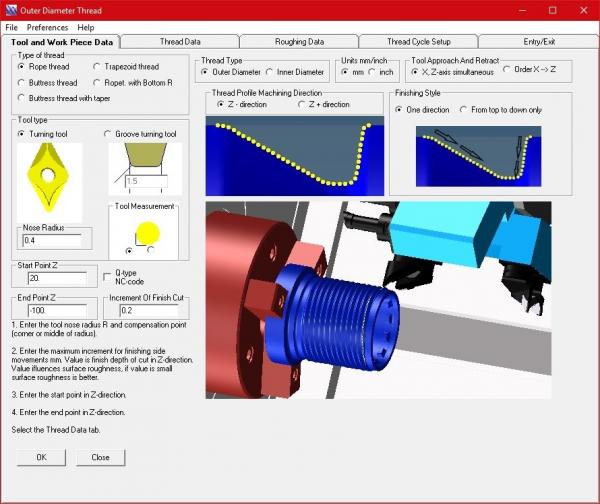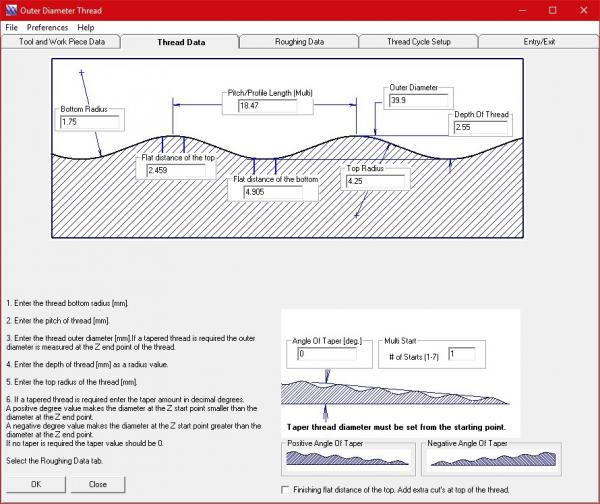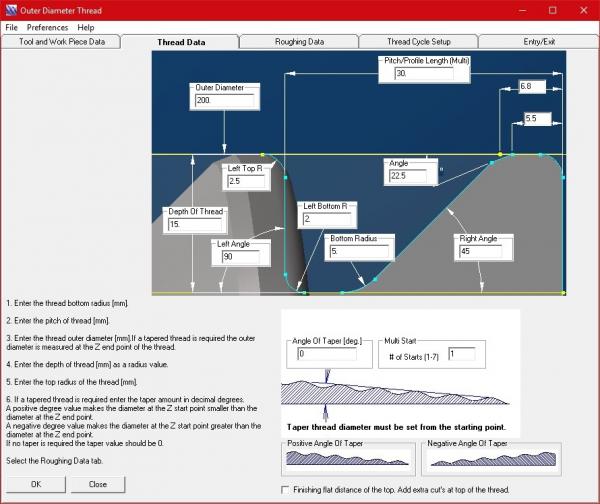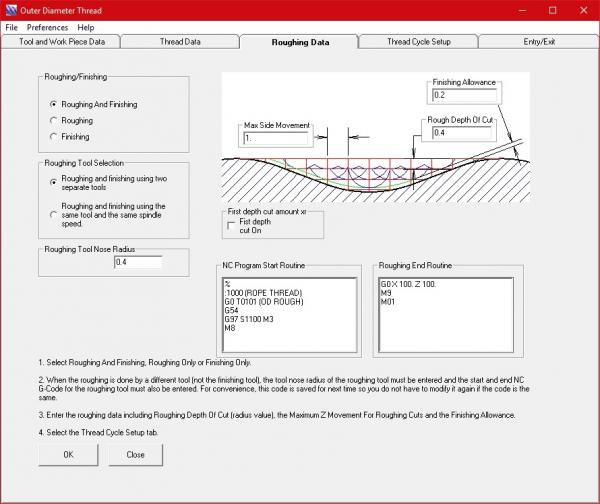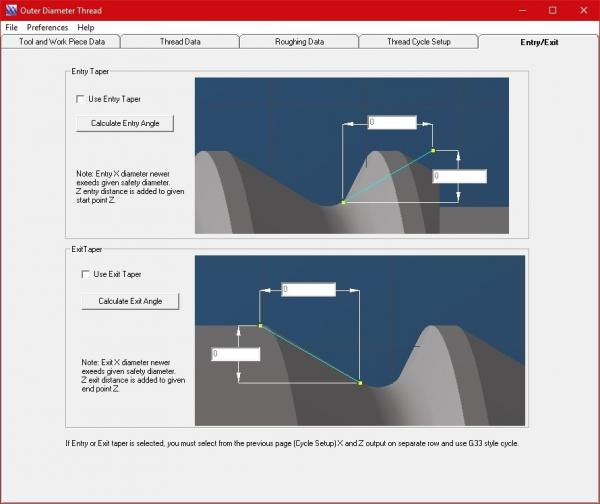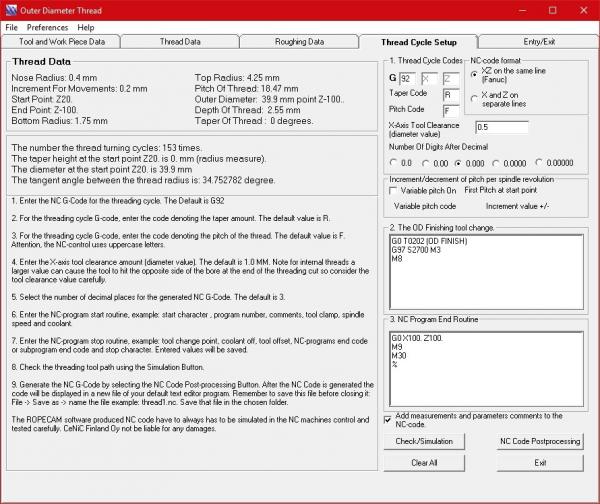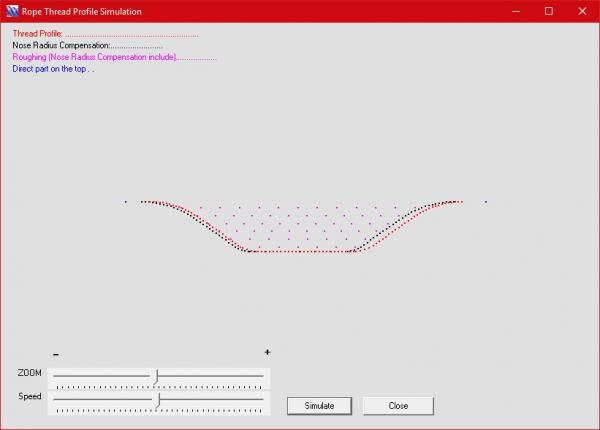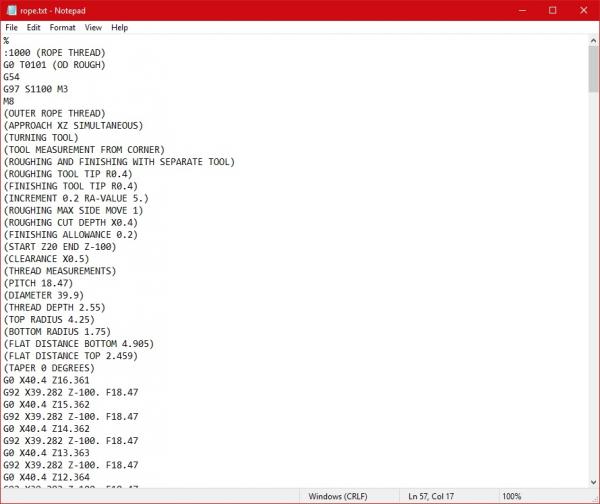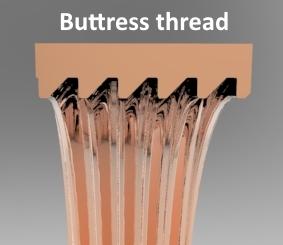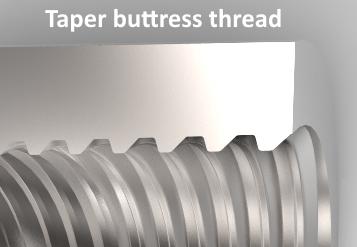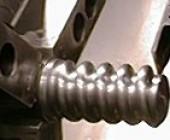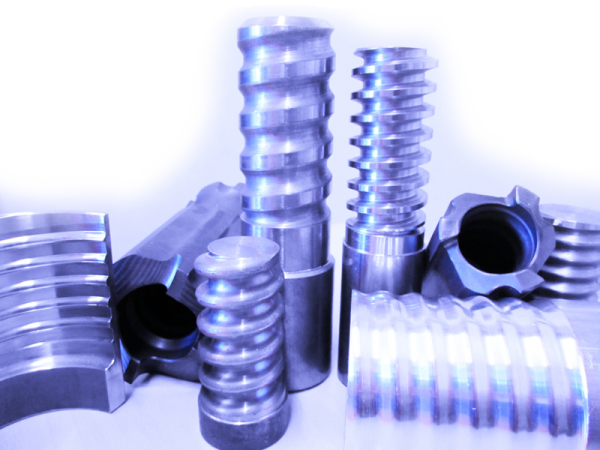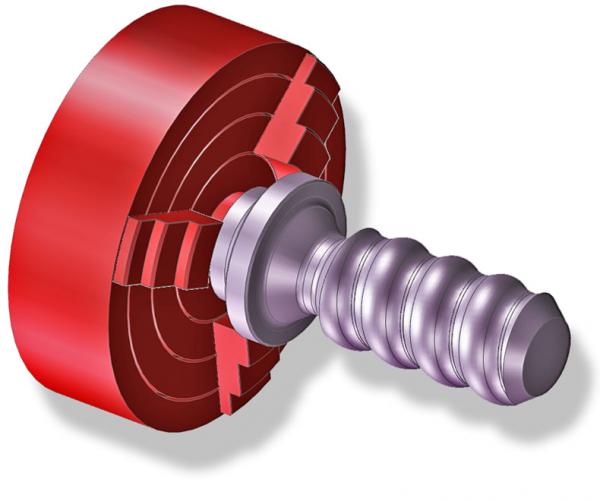RopeCAM creates numerical code to produce unique thread profiles by using a series of canned cycles with a regular turning tool. Each threading cycle is done at a different position to gradually remove the material and create the proper form. There are 5 different thread forms that can be defined by entering the appropriate dimensions.
Both external and internal diameters are possible, with several other options to fine tune the program. The user can choose to rough, finish, or both can be done together with the option of using separate inserts. The code that’s produced can be customized to your machine by filling out the variables yourself.


